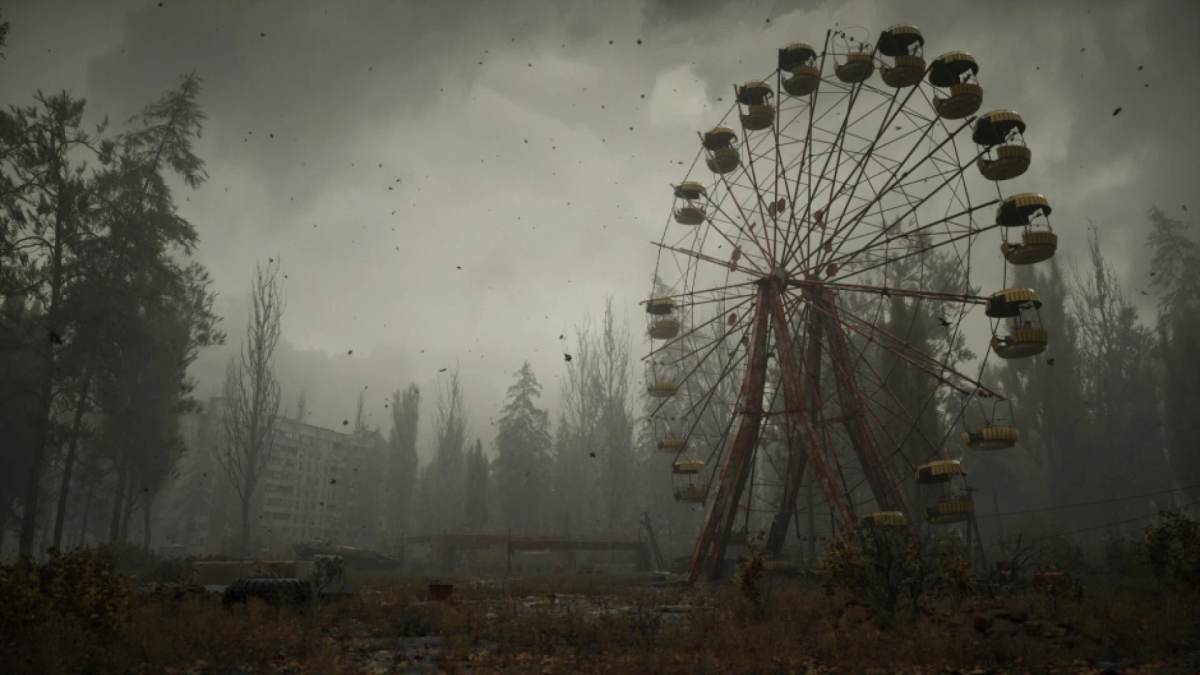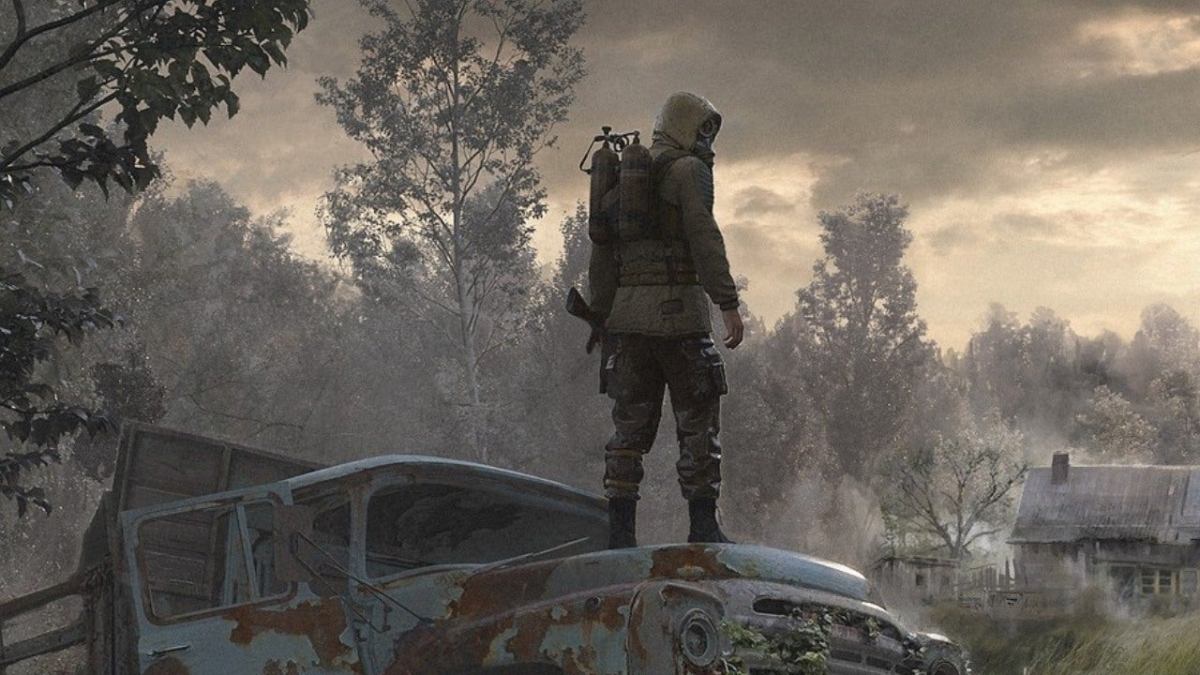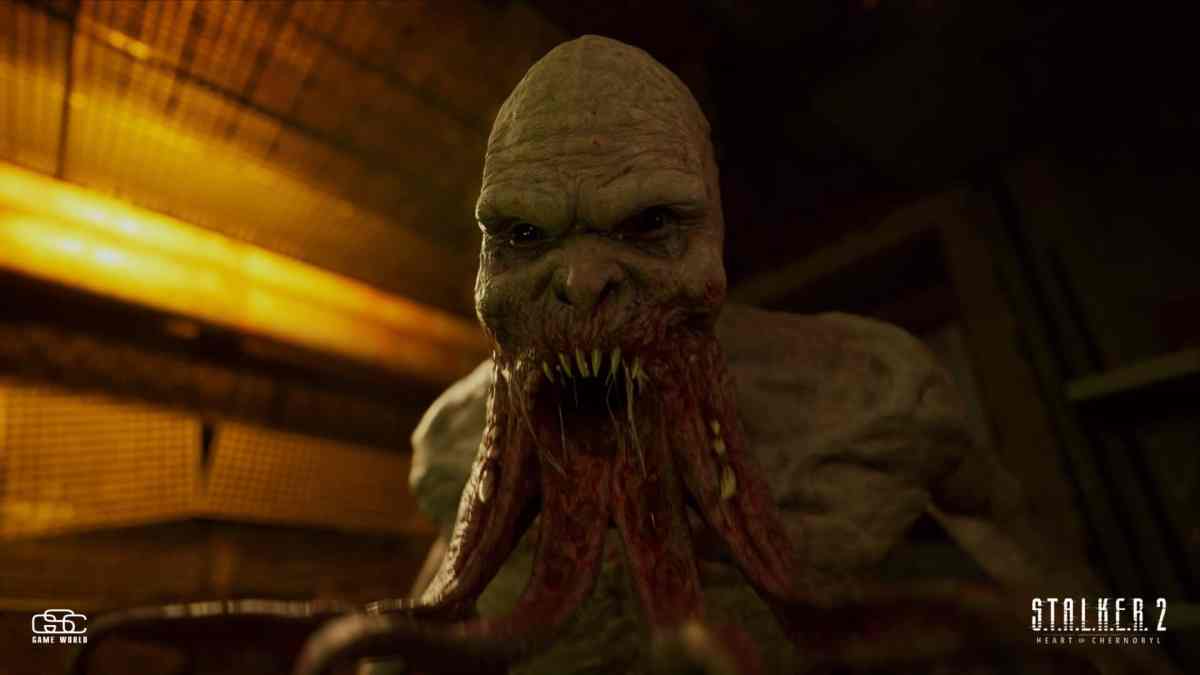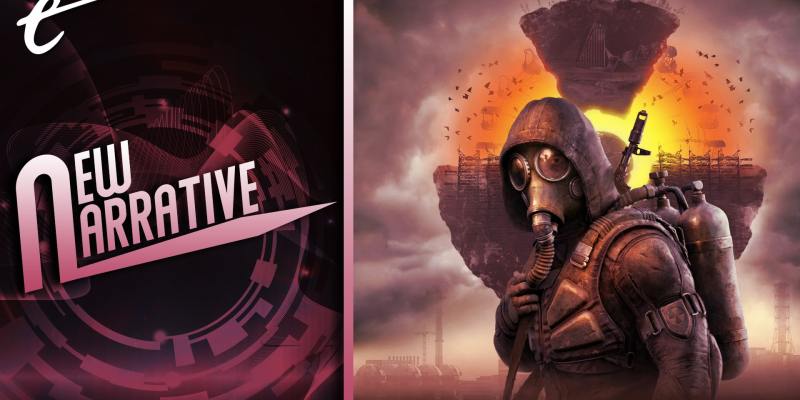This discussion of STALKER 2 contains spoilers for the novel Roadside Picnic, the film Stalker, and for the S.T.A.L.K.E.R. franchise.
The gameplay trailer for S.T.A.L.K.E.R. 2: Heart of Chernobyl (or just STALKER 2, to simplify) shown at E3 2021 is prime hype material. The graphics look unreal, the game world oozes the familiar foreboding atmosphere, and the gameplay seems to recapture the frantic firefights and patient exploration of the old titles. Assuming we are not looking at a vertical slice that will be downgraded or fall apart in action, STALKER 2 looks set to deliver long-absent, long-missed thrills in a shiny and polished new package.
Yet for all my barely controllable enthusiasm, I hope that this time around the developers take more risks with the narrative and embrace STALKER’s source material. Beneath the digital shadow of the Chernobyl power plant, amongst the monsters and burly men playing guitar and shouting “cheeki breeki,” it’s easy to forget the literary and artistic roots of the franchise.
The title STALKER is a reference to Stalker, a 1979 art film by the legendary Russian film director Andrei Tarkovsky. At nearly three hours long, with barely any action sequences and a cast of just four key characters, it is a deliberately slow, brooding, contemplative tale – as much a mood piece as it is a setting from which to examine the nature of human desire, ambition, and fulfillment.

Stalker, a guide through the film’s anomalous, cordoned off Zone, is introduced as a kind of blessed pariah with special abilities that enable him to navigate the Zone. This premise is both subverted and reinforced over the course of the film. On one hand, it is hinted that he may be no more than a poor wretch clinging on to the Zone, perhaps even lying about his abilities, to maintain a sense of purpose and self-worth. On the other hand, the film closes with a lengthy monologue from Stalker’s wife that suggests he may really have preternatural talents.
Stalker guides two men, the Writer and the Professor, to the Room, a fabled chamber at the heart of the Zone that is said to grant one’s innermost wishes. The Writer wants the Room to restore his fading sense of inspiration, while the Professor wants to destroy it, but ultimately neither man enters it, realizing that no one can really know their innermost desires and what they might lead to.
The film was in turn adapted by Tarkovsky and the Strugatsky Brothers, arguably the finest speculative fiction writers Russia has ever produced, from their 1972 novel Roadside Picnic. While far more action-packed and much less minimalist than the film, the novel at its core shares many philosophical themes with the film.
However, the novel has much broader existential ambitions. An offhand remark suggests that the strange alien artifacts found in the novel’s multiple Zones are literally garbage discarded by an alien race during a roadside picnic while passing through our solar system. It is a flippant subversion of an anthropocentric premise often seen in science fiction. Humanity is no more, and often much less, important than any other object one might pick at random from the universe’s detritus.

Several of these plot devices did make their way into the STALKER franchise and will surely appear in some form in 2. Grim men roam the Zone, a classified area based in the Chernobyl fallout site, for strange artifacts to smuggle beyond the cordon. A fabled room at the heart of the Chernobyl power plant is said to grant wishes. The Chernobyl Zone is wrapped up in similar political machinations to the Zones in Roadside Picnic. And while there is nothing that comes close to the railroad trolley sequence from Tarkovsky’s film, the quiet moments in the STALKER franchise conjure up an atmosphere that is rivaled only by the likes of Half-Life and BioShock in their sense of place and immersion.
But the broader philosophical themes of the novel and the film were mostly left behind. Strelok, the protagonist of STALKER: Shadow of Chernobyl, really is a chosen one: Contrary to the film, he has the power and the desire to make a choice that radically shapes the future of the Zone.
While the ending does give you the option to enter the wish-granting room or to reject it, and the multiple outcomes do depend on some earlier conditions and choices, ultimately Strelok (literally translated as “shooter”) is not developed enough as a character for these to carry much weight. Indeed, most of the endings of Shadow of Chernobyl can be summed up with a single remark from the Writer in Tarkovsky’s Stalker: “World domination, a just society, the kingdom of heaven on Earth. Those aren’t desires, but an ideology, actions, concepts. Subconscious compassion cannot yet be realized as a common instinctive desire.”

The idea that the Zone is the unthinking byproduct of an alien roadside picnic is discarded altogether. In STALKER’s fiction, the anomalies and artifacts of the Zone are not even the result of the 1986 Chernobyl power plant tragedy, but the side effects of failed experiments in mind control conducted after the disaster.
A part of me understands why these design choices were made. It is a way of supporting a feeling of player agency, of putting them at the center of the game world and giving them some control over its end state. Meanwhile, STALKER’s lore ties up loose ends seen in the book and the film and explains what seemed unexplainable. If games are about giving the player a sense of completion and narrative closure, then perhaps these were exactly the right design choices to make.
But another part of me wishes that the developers had taken more of the narrative risks found in the source material. It is a theme of Roadside Picnic and Tarkovsky’s Stalker that sometimes we don’t have agency, or that we shouldn’t exercise it, and that sometimes things really do not have a happy ending or an explanation that can be grasped by us. And in the grand scheme of the universe, that really is okay.
Likewise, with three STALKER games behind it and a loyal fan base, in a space crowded with AAA first-person titles, I think it really would be okay for STALKER 2 to set itself apart from its predecessors and the broader market by tackling its source material head on. Here is hoping the heart of Chernobyl is an existential void, albeit with some very nice graphics and a realistic ballistics model.
